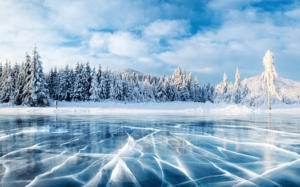Life in a cold climate
Posted on August 15, 2012 by Lizzy Andrew, Newcastle University
Life can exist and thrive in even the most extreme environments. Investigating regions which are uninhabitable for most organisms can identify species with remarkable tolerance for a number of environmental stresses, including acute temperatures, high concentrations of heavy metals and elevated hydrostatic pressure. The study of these organisms – which are known as extremophiles – has potential application to a wide range of disciplines, including research into biofuels and the field of astrobiology.

Researchers from McGill University, Quebec, have identified a new species of bacteria which is capable of growing in such extreme conditions… Planococcus halocryophilus, named after its ability to grow in high-saline conditions (-halo) and at sub-zero temperatures (-cryo), was discovered at Eureka, Ellesmere Island, within the Canadian High Arctic.
The novel aerobic, Gram-positive, motile, coccoid bacterial strain was found within the active layer of permafrost – the top layer of soil that thaws during summer and freezes during winter – at a depth of less than 1m below the surface.
In a paper published in the International Journal of Systematic and Evolutionary Microbiology, the authors demonstrate that Planococcus halocryophilus has the ability to tolerate extreme cold and grow at temperatures as low as -10oC, and up to and including 37oC.
The ability to tolerate sub-zero temperatures is thought to be due to the strain’s capacity to thrive in high-saline conditions. One of the only sources of water in the active layer is high-salinity brine, which remains liquid at low temperatures. P. halocryophilus can grow in salt concentration as high as 19% – a tolerance thought to provide the bacterium with an adaptive advantage.
The micro-organism is believed to be a regular member of the active layer microbial community, living in pockets of liquid brine within the permafrost. Other microbes in the Planococcus genus have been isolated from Arctic, Antarctic and marine environments. P. halocryophilus has the broadest cold and salt tolerance of the Planococcus genus reported to date, which allows it to survive in extreme cryoenvironments where others would perish.
